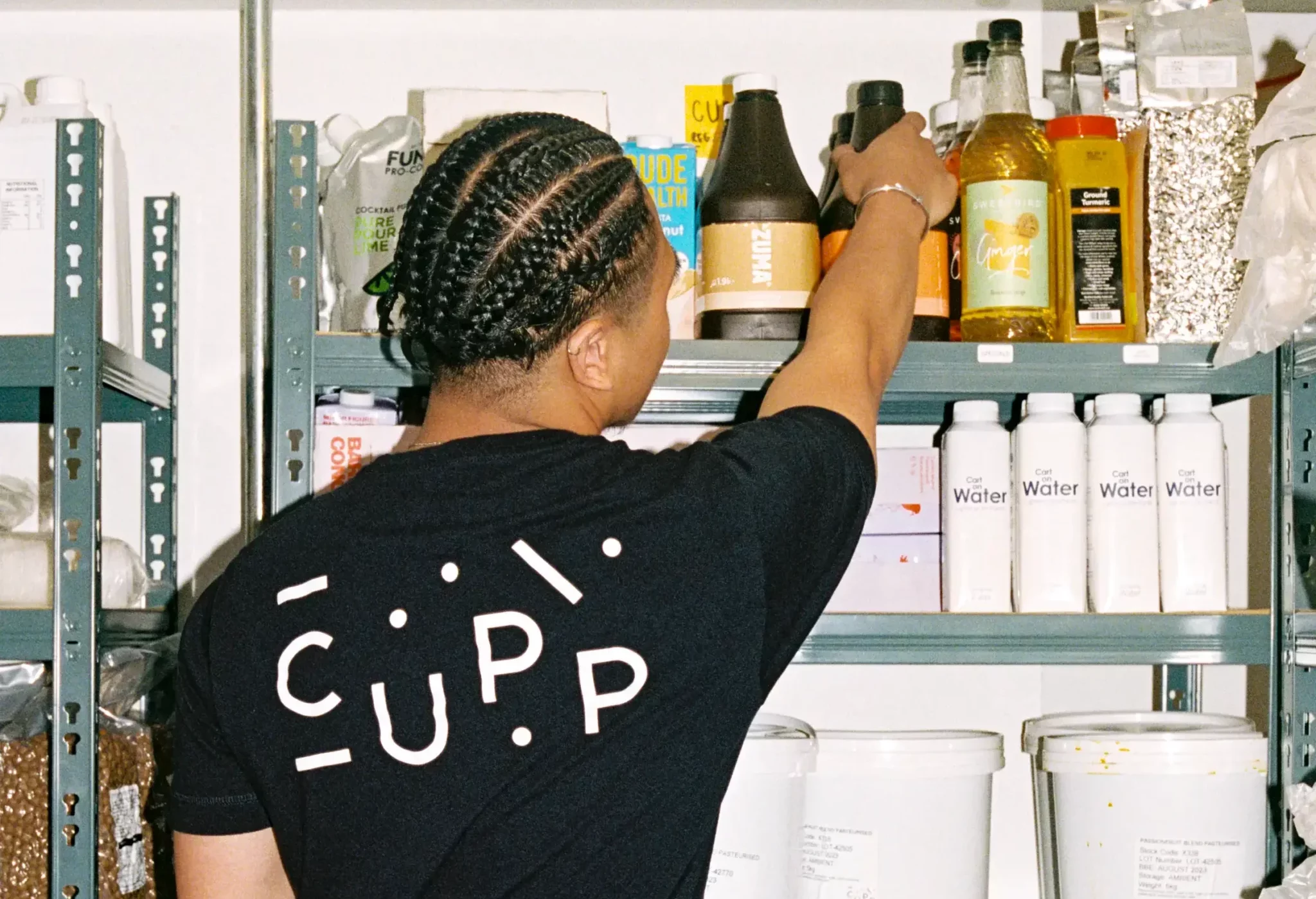Running a restaurant is no easy feat. From managing staff to keeping customers happy to overseeing the kitchen, there are numerous things to juggle. But one area that often gets overlooked is inventory management.It might not seem like the most exciting part of the job, but it’s definitely one of the most critical.
After all, if you run out of key ingredients or supplies, your business could grind to a halt. That’s where essential restaurant inventory reports come in.
In this #snack, we’ll explore everything you need to know about these valuable reports and how they can help you streamline your restaurant’s operations.
Introduction to Inventory Management
Before we dive into the world of essential restaurant inventory reports, let’s take a step back and talk about inventory management as a whole.
At its core, inventory management is all about keeping track of the supplies, ingredients, and other resources that your restaurant uses. That means things like food, beverages, paper goods, cleaning supplies, and more.
Effective inventory management involves striking a delicate balance between having enough supplies on hand to meet customer demand, while also minimising waste and keeping costs under control. This can be a tricky task, but it’s essential for running a successful restaurant. Inventory management is not just limited to restaurants, it is a crucial aspect of many businesses.
One of the biggest challenges of inventory management is predicting the demand for products. If a restaurant orders too much of a particular ingredient, it may go to waste if it doesn’t get used before it expires. On the other hand, if a restaurant doesn’t order enough of an ingredient, it may run out and have to turn away customers.
Another challenge is managing inventory levels during seasonal fluctuations. For example, a restaurant may need to stock up on certain ingredients during the holiday season to meet the increased demand for certain dishes.
Effective inventory management also involves keeping track of the cost of goods sold (COGS). COGS is the cost of the ingredients and supplies used to make a dish. By keeping track of COGS, a restaurant can determine the profitability of each dish and make adjustments to the menu accordingly.
Finally, inventory management systems have become increasingly sophisticated with the use of technology. Many restaurants now use software to track inventory levels, predict demand, and generate reports. This has made the process of inventory management more efficient and accurate.
Key Types of Essential Inventory Reports
Running a successful restaurant requires a lot of careful planning and management. One of the most critical aspects of running a restaurant is managing your inventory effectively. It’s essential to keep track of what you have on hand, what you’re using, and when you need to reorder supplies. This is where essential restaurant inventory reports come in.
Essential restaurant inventory reports are a set of reports that provide valuable insights into your restaurant’s inventory levels, usage patterns, and more. By using these reports, you can make informed decisions about your inventory and ensure that you always have the supplies you need to run your restaurant effectively.
Here are some of the most critical inventory reports that every restaurant should be using:
Inventory Turnover Report
The inventory turnover report provides insights into how quickly your stock is selling. A high turnover rate indicates robust sales, while a low turnover rate might suggest overstocking or outdated stock. Keeping tabs on this helps maintain balance in your inventory.
Inventory Count Sheet:
This report provides a snapshot of your current inventory levels. It’s typically run at the end of each shift or day to help you keep track of what you have on hand. By using this report, you can identify any discrepancies between your inventory levels and what you expected to have, which can help you identify any potential issues with theft or waste.
Inventory Usage Report:
This report shows how much of each item you’re using over a specific period. This data can help you identify which items are being used quickly and which ones might be sitting on the shelf for too long. By using this report, you can adjust your ordering patterns to ensure that you’re only ordering what you need, which can help you reduce waste and save money
Ordering Report:
This report uses historical data to help you predict future demand and determine when you need to reorder specific items. By using this report, you can avoid running out of key ingredients or supplies during busy periods, which can help you avoid disappointing your customers.
Inventory Forecasting Report:
The inventory forecasting report projects future inventory requirements. This report is paramount in preventing stock-outs and overstocking, aiding in making accurate purchasing decisions.
Stock-Out Report
The stock-out report highlights items that have reached or are nearing depletion. Such a report allows you to act proactively, preventing lost sales due to stock-outs.
Slow-Moving Inventory Report
This report identifies stock that hasn’t sold within a specific timeframe. Recognising slow-moving stock prevents overstocking these items in the future, thereby reducing storage costs and potential write-offs.
Stock Aging Report
The stock ageing report presents the age of your stock. Such a report is critical for items with expiry dates, preventing losses due to expired or obsolete stock.
Additionally, you can use this report to identify trends in customer demand, which can help you adjust your menu offerings to better meet your customers’ needs.
Overall, essential restaurant inventory reports are an essential tool for any restaurant owner or manager. By using these reports, you can make informed decisions about your inventory, reduce waste, save money, and ensure that you always have the supplies you need to run your restaurant effectively.
How to Use Inventory Reports in Decision-Making
Inventory reports provide valuable data that can help you make informed decisions about how to manage your restaurant’s inventory. By analysing this data, you can identify trends, spot inefficiencies, and make adjustments that can help you save money and improve your bottom line.
So, how do you actually use all of this data to make informed decisions for your restaurant? Here are a few examples:
If you notice that you’re consistently running out of a specific ingredient during peak hours, you might need to adjust your ordering patterns to ensure you have enough on hand. This could mean ordering more of that ingredient or adjusting your menu to use it more sparingly.
If you notice that you’re wasting a lot of food because it’s spoiling before you can use it, you might consider ordering smaller quantities or finding ways to use up those ingredients more quickly. For example, you could create a daily special that incorporates those ingredients or find ways to preserve them for later use.
If you notice that some menu items are consistently selling out within the first hour of service, you might need to adjust your ordering patterns or consider adding more staff to keep up with demand. Alternatively, you could adjust your menu to feature more of those popular items or create new dishes that are similar in flavour or style.
Ultimately, the key to using inventory reports effectively is to be proactive. Don’t wait until you’re running out of ingredients or wasting food to make changes. By regularly reviewing your inventory reports and making adjustments as needed, you can ensure that your restaurant is running smoothly and efficiently.
The Role of Technology in Restaurant Inventory Reports
While you can definitely track inventory manually using pen and paper, doing so can be time-consuming and error-prone. That’s why many restaurants are turning to technology to make the process more streamlined and efficient. By using inventory management software, you can save time, reduce errors, and gain valuable insights into your inventory usage patterns.
The Software
There are a variety of inventory management software options on the market today, each with its own set of features and benefits. Some popular options include MarketMan, Nory, Upserve Inventory, and Bevspot. These platforms can help you automate the inventory tracking process and provide real-time insights into your usage patterns, ordering patterns, and more.
Nory, for example, allows you to track inventory levels in real-time, set up automatic reordering, and generate detailed reports on your inventory usage but also accounted vs unaccounted food tracking, which can help you optimise your menu and reduce waste. Upserve Inventory, on the other hand, offers features such as recipe costing and menu engineering. Bevspot is designed specifically for the beverage industry, allowing you to track your bar inventory, manage your beverage costs, and create custom ordering lists.
By using inventory management software, you can not only save time and reduce errors but also gain valuable insights into your business. For example, you can identify which items are selling well and which ones are not, adjust your ordering patterns accordingly, and optimise your menu to increase profitability.
Overall, technology has revolutionised the way that restaurants manage their inventory. By using inventory management software, you can streamline your operations, reduce waste, and increase profitability. So if you’re still using pen and paper to track your inventory, it may be time to consider making the switch to a more efficient and effective solution. Streamlining the Restaurant Inventory Report Process
4 tips for success
Now that we’ve covered the basics of essential restaurant inventory reports, let’s talk about how you can make the process as seamless as possible. Here are some tips:
- Train your staff: Make sure everyone on your team understands the importance of accurate inventory tracking and knows how to use any technology you have in place.
- Keep track of waste: Pay attention to which items are going to waste and why. This can help you adjust your ordering patterns and menu items accordingly.
- Stay organised: Keep your inventory organised and stocked to ensure you can quickly and easily find what you need when you need it.
- Regularly review your reports: Set aside time each week or month to review your inventory reports and make any necessary adjustments to ordering or menu items.
Conclusion
Managing inventory might not be the most glamorous part of running a restaurant, but it’s definitely one of the most critical. By keeping tabs on your inventory levels, usage patterns, and ordering habits, you can ensure that your restaurant is always fully stocked and ready to serve customers.
So, give those essential restaurant inventory reports a try, and see how they can help take your restaurant to the next level!
Frequently Asked Questions
What is inventory management?
Inventory management is the process of keeping track of the supplies, ingredients, and other resources that your restaurant uses.
Why is inventory management important?
Effective inventory management helps you strike a balance between having enough supplies on hand to meet customer demand while also minimising waste and keeping costs under control.
What are essential restaurant inventory reports?
Essential restaurant inventory reports are a set of reports that provide valuable insights into your restaurant’s inventory levels, usage patterns, and more.

